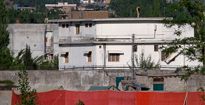Students Predicted Bin Laden's Location in 2009
It seems Osama Bin Laden could have been found earlier if U.S. officials had taken seriously a project conducted by a group of UCLA geographers two years ago.
Using a probabilistic model they'd created to predict how animals distribute themselves, professors Thomas Gillespie and John Agnew, along with a class of undergraduates at the University of California, Los Angeles, set out in 2009 to predict bin Laden's location.
The result: an 88.9 percent probability that bin Laden was living in a city less than 300 kilometers (about 200 miles) from Tora Bora, his last known location in Afghanistan.
Within that area: Abbottabad, Pakistan, where bin Laden was located and ultimately killed Sunday night.
Using what they called "life history characteristics," the professors and students predicted that he would be located in a large town, not a cave, and that the building would have high ceilings, more than three rooms, cover from trees, a fence and electricity.
Indeed, when Navy SEALs located bin Laden, the 9/11 mastermind was not hiding in a cave in Afghanistan. He was living in a huge compound in an upscale Pakistani suburb -- just 35 miles from the Pakistani capital of Islamabad and down the street from Pakistan's version of West Point.
"He was more or less living in plain sight [and] relatively high on the hog," a senior intelligence official told ABC News.
"Caves are cold," Gillespie told Science magazine. "You can't see people walking up to them." But he said bin Laden should have chosen a different home -- "An inconspicuous house would have suited him better."
The bin Laden tracking idea arose during conversations between Gillespie and Agnew in the UCLA geography department in 2009.
Combining satellite information, biogeographic theories and what they knew of bin Laden's travels since Tora Bora, students created a probabilistic model of where he likely was hiding.
"The [biogeographic] theory was basically that if you're going to try and survive, you're going to a region with a low extinction rate: a large town," Gillespie told Science magazine. "We hypothesized he wouldn't be in a small town where people could report on him."


